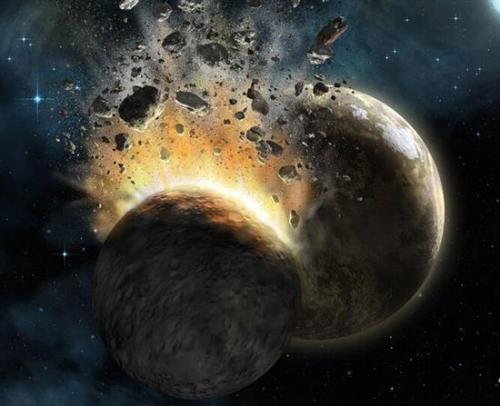As one commentator has put it, fleeing would mean "selecting a slow death over a quick one. The death toll would be very little affected by any plausible relocation effort, since Earth's ability to support life would be universally diminished."
有一位評論家說,逃跑意味著“在慢死和快死之中選擇慢死。無論你怎么改變位置,死亡的人數不會受到多大影響,因為地球支持生命的能力將會普遍降低”。
The amount of soot and floating ash from the impact and following fires would blot out the sun, certainly for months, possibly for years, disrupting growing cycles. In 2001 researchers at the California Institute of Technology analyzed helium isotopes from sediments left from the later KT impact and concluded that it affected Earth's climate for about ten thousand years.
撞擊產生的濃煙和飛灰以及隨之發生的大火,肯定會遮天蔽日達數月之久,有可能是數年之久,打亂了生長周期。2001年,加州理工學院的研究人員分析一次KT撞擊留下的沉積物里的銥同位素后,得出結論說,它對地球氣候的影響達1萬年左右。

This was actually used as evidence to support the notion that the extinction of dinosaurs was swift and emphatic—and so it was in geological terms. We can only guess how well, or whether, humanity would cope with such an event.
這完全可被用做證據,證明恐龍的滅絕是快速的,徹底的——從地質學看來,情況就是如此。人類在多大程度上或是否能夠應付這樣的事件,我們只能猜猜罷了。
And in all likelihood, remember, this would come without warning, out of a clear sky.
記住,這樣的事件很可能像是晴天霹靂,令人猝不及防。
But let's assume we did see the object coming. What would we do? Everyone assumes we would send up a nuclear warhead and blast it to smithereens. The idea has some problems, however. First, as John S. Lewis notes, our missiles are not designed for space work. They haven't the oomph to escape Earth's gravity and, even if they did, there are no mechanisms to guide them across tens of millions of miles of space.
不過,我們來假設一下,我們看到了那個物體在飛過來。我們會怎么辦?人人都認為,我們可以發射一枚核彈頭,把它炸成碎片。然而,那種辦法有幾個問題。首先,正如約翰·S·劉易斯所說,我們的導彈不適于在宇宙里作業。它們沒有本事擺脫地球的引力;即使擺脫了地球的引力,我們也沒有這個裝置來操縱它們,讓它們在太空里飛行數千萬公里。












